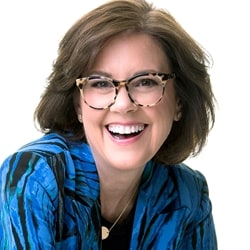Ford Motor Company integrated social media into its marketing in a big way in 2009, and this year is moving 25% of its traditional media budget to the digital space. Earlier this week, Ford further demonstrated its commitment to social and digital tools as a way to reach out to new media and, of course, new audiences.
Ford executives from across the globe Monday participated in a 12-hour marathon social media conference at the North American International Auto Show in Detroit, that featured live interviews, Facebook wall-posts, blogger interviews, and interactive twitter Q&A's. From the floor of the show, Jim Farley, group VP of marketing, fielded questions from Brian Solis and me about how the company will use social media as well as talked up the Focus, the first car Ford is marketing to buyers globally.
It's been a big weeks for Ford: Also this week, the automaker won both the North American Car and Truck of the Year Awards at the kickoff of the Detroit show (with the Ford Fusion Hybrid sedan winning Car of the Year and the Ford Transit Connect van named Truck of the Year). And at last week's Consumer Electronics Show, Ford won the highest honor in the car tech category for its new MyFord touch interface, a touch-screen made for a car dashboard. (It narrowly lost overall Best in Show to a Panasonic 3D-compatible flat-panel HDTV, said Scott Monty, who heads up social media at Ford.)
Highlights of the yesterday's chat with Jim Farley (edited for clarity) are below:
On the One Ford initiative:
"Here in Detroit, seems that people finally realize what One Ford means. One car across the world....'
On Ford's focus on in-car technology for music, entertainment, communications and information:
"The bottom line; when you enter your car, it should be as cool as your iPhone." Ford's in-vehicle communications platform, Sync, should also host applications like an iPhone. "My point of view is that we create an open platform like iPhone (for developers) and let the applications flow based on Sync. This seems odd since you would think we want $, but we want the Sync community to grow and these applications are more creative than we can create."
To critics who say the touch-screen dash is distracting to drivers:
"To be honest - how Sync is executed allows for a richer experience without distractions. I am a believer and have dumped my earphones."
On envisioning one car, one Focus, across multiple social networks:
Ford's social media strategy is global: "We are working regionally to assess the best places to be and investing in those places. Honestly, the Fiesta Movement idea came from a social media site in China."
On working with CEO Alan Mulally:
"Alan is so unique. He is deadly serious business leader and he combines this with a passion for putting the customer first. I knew that I needed to join the team when I met Alan; he gets it. He had a vision for efficient transportation and tech for all. (He is an engineer, after all.) Lastly, he as such an engaging personality, he makes working in a team environment fun."
On the advantages/limitations of moving 25% of your traditional budget over to social and digital:
"Limits are our fears. Giving 100 Fiestas out meant some would crash; other owners would get in trouble. Also, we need to have enough creative horsepower to come up with unique ideas that viewers will find fun. [But the] advantages are credibility and efficiency."
On the challenge in building/selling cars in this economy:
"Well, we have such a cool engineering and design team at Ford that the limit is the money we can give them to dream up cool stuff. The difficulty is having people fall in love with Ford again."
On the keys to changing people's minds about what their perceptions of what Ford is and the products it builds:
"Having proof about both. Hype doesn't work anymore. Goodwill for Ford is high but we need proof around fuel economy, leadership, tech, fun to drive, great design, etc. These proof points then demonstrate we are different and worth a look."
On the "a-ha moment" when Farley grasped the power of social media:
"The a-ha for me was Scion. [Farley spent 17 years at Toyota, joining Ford in 2007.] I learned that for a brand that people don't know or trust, the company must rely on others to tell the story. People don't trust big companies, they do trust their friends."
On measuring the effectiveness of social media:
"We measure program by program, not overall. We tie it to sentiment and volume of buzz around the brand."
On convincing the C suite on the value of social media:
"Either they get it or they don't. Thankfully we do."
The full transcript is here.
Did you like this article?
Know someone who would enjoy it too? Share with your friends, free of charge, no sign up required! Simply share this link, and they will get instant access…
Know someone who would enjoy it too? Share with your friends, free of charge, no sign up required! Simply share this link, and they will get instant access…
Marketing Strategy Articles
You may like these other MarketingProfs articles related to Marketing Strategy:
- Jamie Dimon on AI: What He Gets Right, and What He Leaves Out
- Why B2B Marketers Are Investing in AI
- Martech Replacement Trends in 2024
- Brands & Politics: Do People Want Brands to Weigh In More?
- How European B2B Marketers Succeed With Authentic Marketing: Data Privacy and Trust
- Why a Purpose-Driven Marketing Strategy Matters in B2B




